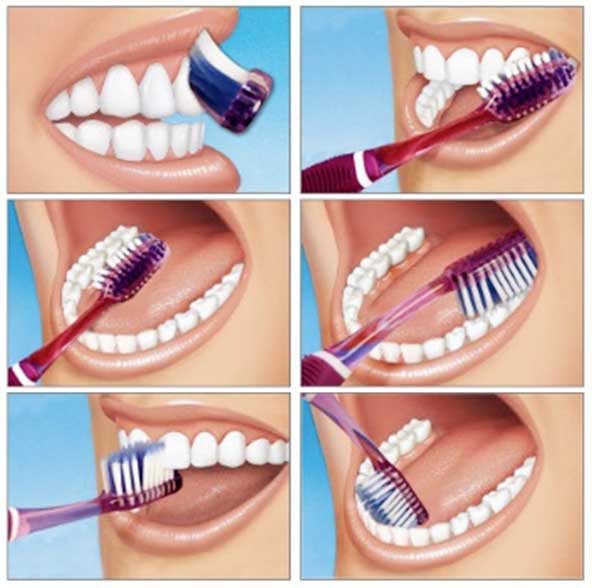You know oral care is vital for your smile and overall health, but how will you know you’re taking care of your oral hygiene? Answer all your questions about brushing your teeth, including how long you need to brush, how to tell if your teeth are clean and typical techniques to do a thorough cleaning.

How Much Time Do You Need to Brush Your Teeth?
It requires at least two minutes to brush properly. Especially for kids, two minutes can seem like a long period. To make it a little more entertaining, use a stopwatch. Some electronic toothbrushes have built-in timers to promote using them for two minutes at a time.
Is Too Much Brushing Bad for Your Teeth?
As long as you apply strong but gentle pressure, brushing for longer than two minutes is safe. Too much pressure can harm gum and enamel tissue, causing sensitive teeth and inflamed lips. To notice the change in the pressure being placed on your teeth, try brushing with the opposite hand from your dominant one.
Which techniques should I use?
By brushing under and around the gumline, where germs and plaque collect, you can avoid and manage gum disease. To make sure you’re thoroughly cleansing your teeth, consider these three traditional brushing methods.
1. Bass or Sulcular Technique
The Bass method of brushing includes scrubbing off plaque, also referred to as biofilm, from beneath your gums before it can result in gingivitis.The modified Bass method is one of the most widely used for adults, according to the Indian Dental Association. Up until age 9 or 10, parents should watch over their kids as they clean their teeth.Plaque that is close to and immediately below the gingival cervical regions and sulcus can be effectively removed using this technique. It offers effective periodontal stimulus.
- With your teeth parallel, hold the toothbrush.
- Set the angle of the brush at 45 degrees.
- Brush at an angle so the bristles are just below the gum line.
- Before moving on to the next area, use a back-and-forth or circular motion for 15 to 20 times with firm but gentle pressure.
- After cleaning the outside of each tooth, use the same motions to clean the inside of each tooth.
- Utilizing the bristles on the toothbrush’s toe, hold it vertically behind your front teeth and brush up and down.
- Brush your tongue and the chewing surface of your molars.
2. Stillman Technique
The Bass approach and the Stillman brushing method are comparable. On all areas of the teeth, however, you apply short, back-and-forth horizontal strokes as opposed to circles.
3. Charter Technique
If you have exposed roots, gum recession, spaces between your teeth, or you’ve had periodontal surgery, your dentist might advise using the Charter technique. If you wear permanent partial dentures or orthodontic appliances, Charter is also helpful.
- Put the bristles at a 45-degree angle on the gumline, aiming at the chewing surface or crown of the tooth. In comparison to the Bass and Stillman method, this stance is the opposite.
- Use 15 to 20 counts of gentle vibrating the brush, either in short circular movements or brief back and forth motions.
- Brush each tooth in the same manner, covering the front, back, and chewing areas.
Brushing modifications
Adapted variants of the Bass, Stillman, and Charter techniques are also available. Use the technique you prefer, but once you’ve finished brushing a region, roll or sweep the bristles away from your gums. With this modification, the complete tooth surface is cleaned and any debris between the teeth is swept away. For more details or advice on the best technique for your case, talk to your dental hygienist.
What dental brushes work best for me?
You need the right tools in addition to the brushing technique to complete any work well. In general, using fluoride toothpaste and a soft-bristle toothbrush that fits in the tight spaces will do the trick! Every three to four months, you should change your toothbrush.Older brushes may contain bacteria, and worn and frayed brushes do not clean completely. The recommended amount of time to brush properly is two minutes, using whatever tools are most convenient for you.
How to determine if your teeth are sufficiently clean?
If you’re not scrubbing properly, two minutes might not be enough. Your teeth should be clean and debris-free on all of their sides. On every molar, keep in mind to apply short strokes back and forth against the gums and teeth. Reach both your back molars and the space between your front teeth. Additionally, brushing is just as essential as flossing.
If you see more plaque buildup or swollen gums, you may not be brushing or flossing your teeth thoroughly if you aren’t getting to these confined spaces or using an interdental brush, floss, or water flossers. If you’re not brushing or flossing frequently enough, your dental hygienist can let you know at your next visit.